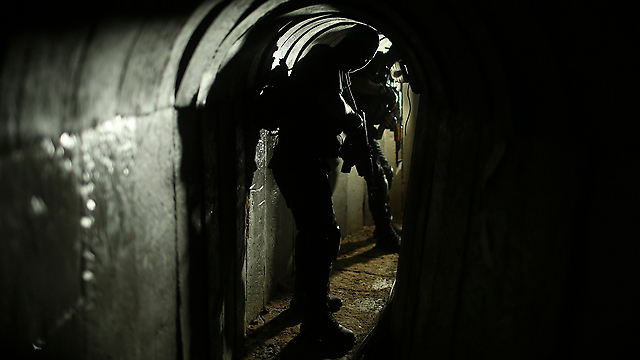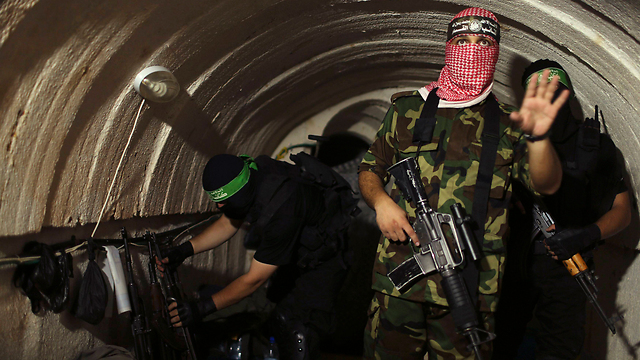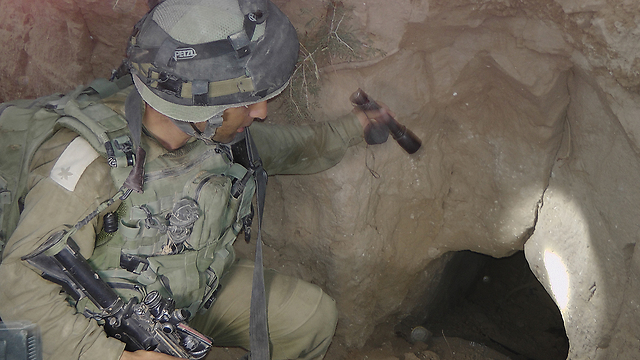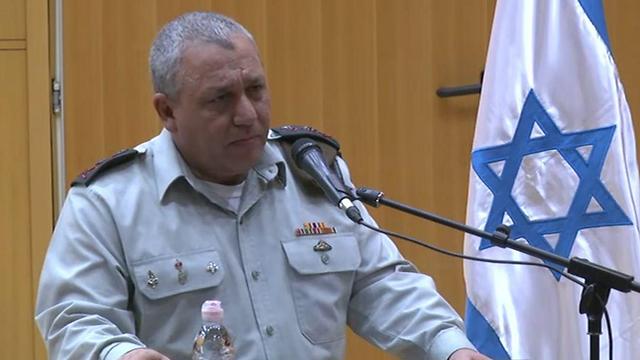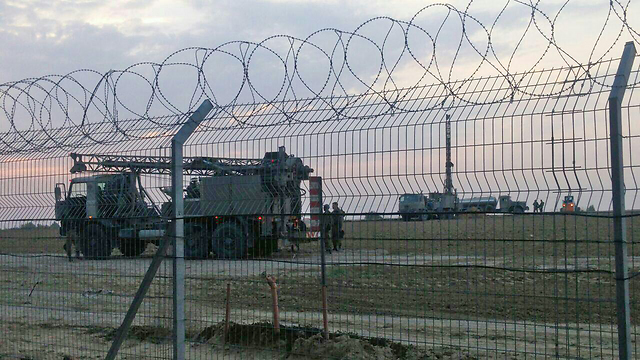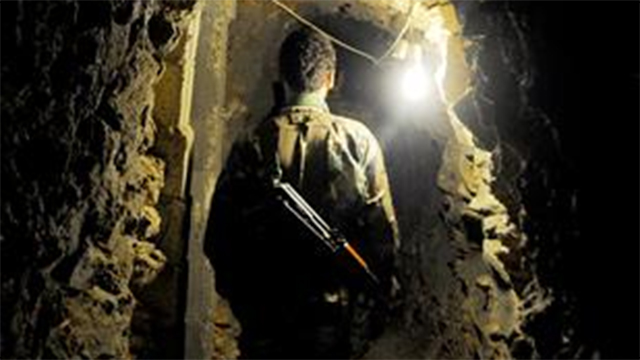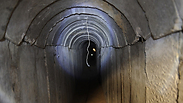
Comptroller: Hamas still has border-crossing tunnels
The State Comptroller report points to failures in combating the Gaza tunnel threat before and during Operation Protective Edge, but not all of the lessons have been learned: Arguments between the IDF and Defense Ministry delay the deployment of the tunnel detection system, while at least half of the tunnels in Gaza were either not destroyed or remain usable.
While the State Comptroller's report on Operation Protective Edge released on Tuesday reveals a series of failures with regard to the IDF's preparedness for the war, the cabinet's decision-making process and the gaps in intelligence the IDF had vis-à-vis the terror tunnels, the situation today is no less dire.
Several weeks after the end of Operation Protective Edge, a senior Southern Command officer told reporters that his recommendation was to attack any border-crossing tunnel the IDF discovers, even if only in a limited ground operation.
His recommendation was disregarded, and the State Comptroller's report notes that "the IDF destroyed or neutralized only about half (of the tunnels) and so failed to complete its mission—something that also came up in the General Staff's investigation following the operation."
Since the IDF initially said over 30 tunnels were discovered, it's safe to assume at least 15 of them remain usable.
In his response to the comptroller report in March 2015, about six months after the operation, former IDF chief of staff Benny Gantz asserted that "Just like we could launch a campaign against the tunnels on July 7, 2014, we can launch an operation against the tunnels today, as the threat still exists."
And while Hamas has resumed its tunnel digging with renewed vigor, the technological solution the top defense officials promised last year—in which billions of shekels have been invested—is being delayed by arguments among the different branches of the army and with their counterparts in the Defense Ministry.
In a future war, this delay in deploying the system to locate and destroy the tunnels and making it operational across the Gaza border—after it had only been partially deployed last year—could once again be to the IDF's detriment.
According to the comptroller's report, it was only in late March 2015, a year after the tunnels were initially marked as a strategic threat, that the deployment of the system on the Gaza border began.
The system is linked to one of two technological projects developed to combat the tunnel threat, which are the culmination of efforts in the defense establishment spanning over 17 years.
According to the comptroller, a disagreement between the Administration for the Development of Weapons and Technological Infrastructure in the Defense Ministry and former GOC Southern Command Sami Turgeman over whether the system was ready was what has prevented the Southern Command from making use of the system earlier than it did.
In July 2015, a year after Protective Edge, Maj. Gen. Turgeman instructed his forces to deploy the anti-tunnel system only to parts of the Gaza border, even though his commanders—IDF Chief of Staff Lt. Gen. Gadi Eisenkot and his deputy Maj. Gen. Yair Golan—ordered the system to be deployed in twice as many locations. According to the comptroller, Golan chided Turgeman and instructed him to continue deploying the system in coordination with the Ground Forces and the Defense Ministry.
Eventually, however, the system was deployed based on the GOC Southern Command's orders—in only select areas.
"An ambiguity was created, which was the expression of numerous ideas and technologies that made it hard to implement the solutions and focus the efforts," the comptroller wrote. "This phenomenon was pointed out by the head of the Operations Division in the Operations Directorate (Maj. Gen. Aharon Haliva) in April 2015."
In mid-2015, Netanyahu instructed the defense establishment to expedite the deployment of the system, which was led to a similar order from Eisenkot. But even after these instructions from above, the Southern Command delayed further in deploying the system, leading the heads of the civilian company carrying out the project to warn the Defense Ministry in September 2015 that these delays will cause the project's completion to be pushed by several months.
"There were clear decisions made by the deputy chief of staff, but things on the ground are sometimes different," wrote the head of the Administration for the Development of Weapons and Technological Infrastructure at the time.
According to the comptroller, "The IDF chief and his deputy failed to supervise the implementation of their instructions to deploy the system. Maj. Gen. Golan chided the Southern Command over the matter in December 2015 as well, but the delays continued even after that."
IDF chief Eisenkot admitted in his response to the comptroller that "despite having defined different deadlines, we have yet to achieve the goal and complete the mission. Now, we are required to examine how to continue from the point we've reached, to narrow the gaps and upgrade our mode of operation."
The farce continued in late December 2015 when the deputy IDF chief confronted the heads of the Southern Command. Golan pointed to "indecisiveness concerning the continuation of the project," adding that "It was agreed that the deployment of the system will continue uninterrupted, as was determined. But in reality, the Command's opinion changed several times without the approval of the deputy IDF chief."
To settle the matter, in January 2016, Golan made an unusual decision to formulate "an agreement between the Ground Forces and the Southern Command to implement the project. The agreement will be signed by the commanders of the branches (Maj. Gen. Eyal Zamir and Maj. Gen. Guy Tzur) and the deputy IDF chief as a third party. The agreement will be binding and deviating from it will only be allowed for clear operational needs and with the approval of Maj. Gen. Golan."
The comptroller defined the need for the agreement as "an expression of the continued display of weakness in deploying the system."
The system was partially deployed during the first half of 2016, and the decision was only recently made to deploy it along the entire Gaza border.
The comptroller's report does not mention how many tunnels and to what length was Hamas able to dig during the year the different branches of the IDF fought among themselves over the deployment of the system.
Despite the series of lessons the IDF has learned and changes it implemented since Operation Protective Edge vis-à-vis fighting in a battle field peppered with tunnels—which included, among other things, training the units and battalions to deal with tunnels and equipping them with the tools they need to that end—the comptroller claims that the IDF has yet to effectively and optimally implement these changes.
Last week, IDF chief Eisenkot told the Knesset's Foreign Affairs and Defense Committee that the Gaza front was at the top of the IDF's priorities and that NIS 2.4 billion have been invested this year into handling Hamas's terror tunnel threat.
To the IDF's credit, it should be noted that the solutions to Hamas's terror tunnels are not limited to technological measures. Over the past year, the IDF has changed its policy with regards to retaliatory attacks following rocket fire, dropping dozens of tons of bombs from the air on strategic Hamas positions. Only time will tell how effective these attacks are.
Tunnels in the north
The comptroller dedicated only a few paragraphs to the threat of tunnels on the northern border. Deputy IDF Chief Golan was quoted in the report as saying during a discussion on the topic: "I don't intend to repeat the faulty management with which the IDF handled the tunnel threat in the south before Protective Edge."
According to military officials, the IDF is not aware of any border-crossing tunnels dug by Hezbollah from Lebanon into Israel in recent years. They offered two explanations for that: Primarily, the difficulty of digging in the Galilee's mountainous terrain, but also the fact Hezbollah has no operational need to dig such tunnels as the border area is thick with vegetation, which Hezbollah has used and will continue to use as cover when trying to infiltrate Israel.
The Israeli forces would meet the vast tunnel network already inside the southern Lebanon area—in villages and their surrounding area—only during the fighting itself.
In the wake of Protective Edge, the comptroller stated, there has been progress made in preparing the Northern Command, with the help of the Defense Ministry, to the underground threat as well.










